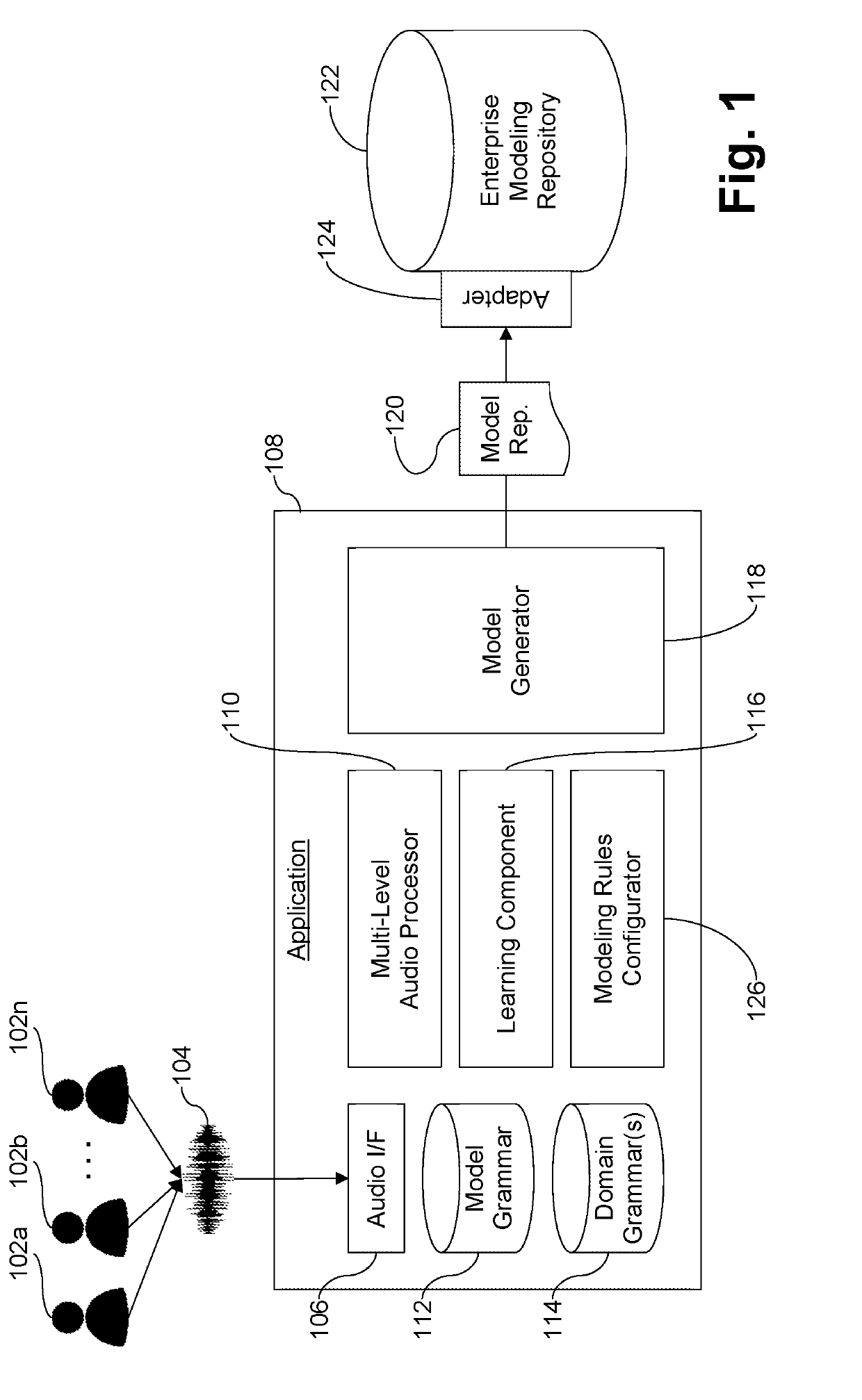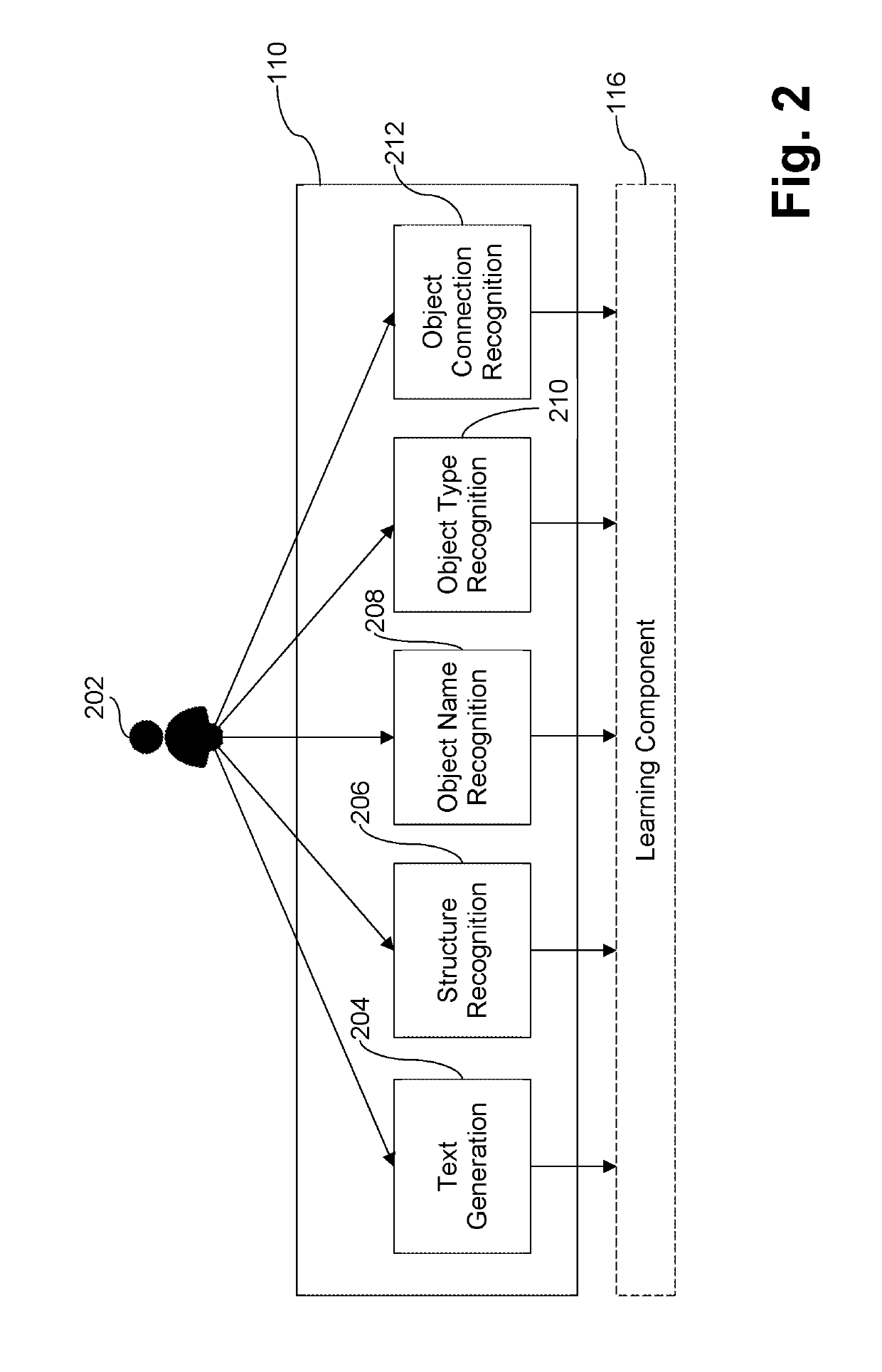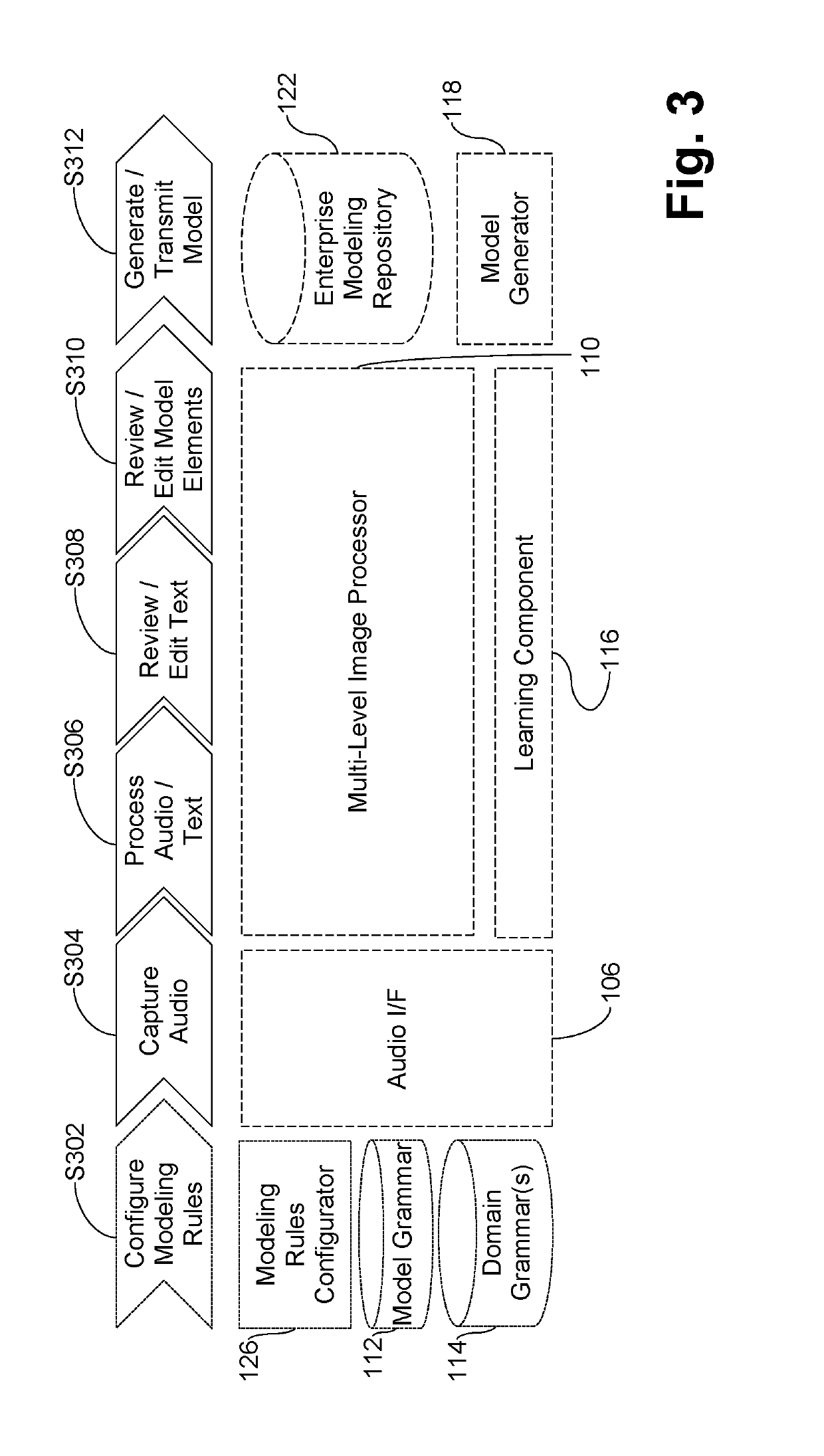System and/or method for interactive natural semantic digitization of enterprise process models
a natural semantic and process model technology, applied in the field of enterprise model generation techniques, can solve the problems of difficult group discussion, resource drain, tedious transfer task, etc., and achieve the effect of reducing manual burden, quick creation, and improving accuracy and precision
- Summary
- Abstract
- Description
- Claims
- Application Information
AI Technical Summary
Benefits of technology
Problems solved by technology
Method used
Image
Examples
example implementation
[0049]Details concerning an example implementation are provided below. It will be appreciated that this example implementation is provided to help demonstrate the concepts of certain example embodiments, and aspects thereof are non-limiting in nature unless specifically claimed. For example, descriptions concerning specific code snippets, tags, the use of mobile devices and apps, the use of specific conventions, mapping rules, etc., are non-limiting in nature unless specifically claimed.
[0050]In certain example embodiments, the device performing the digitization (which may be a mobile device in some instances) may be used to automatically transfer orally-described models into a computerized enterprise modeling platform. For example, certain example embodiments use the ARIS process model.
[0051]In certain example embodiments, the set of predefined grammars and rules for transforming recognized text into the formal modeling language may be adaptable, e.g., to update the sets or create ...
PUM
 Login to View More
Login to View More Abstract
Description
Claims
Application Information
 Login to View More
Login to View More - R&D
- Intellectual Property
- Life Sciences
- Materials
- Tech Scout
- Unparalleled Data Quality
- Higher Quality Content
- 60% Fewer Hallucinations
Browse by: Latest US Patents, China's latest patents, Technical Efficacy Thesaurus, Application Domain, Technology Topic, Popular Technical Reports.
© 2025 PatSnap. All rights reserved.Legal|Privacy policy|Modern Slavery Act Transparency Statement|Sitemap|About US| Contact US: help@patsnap.com



